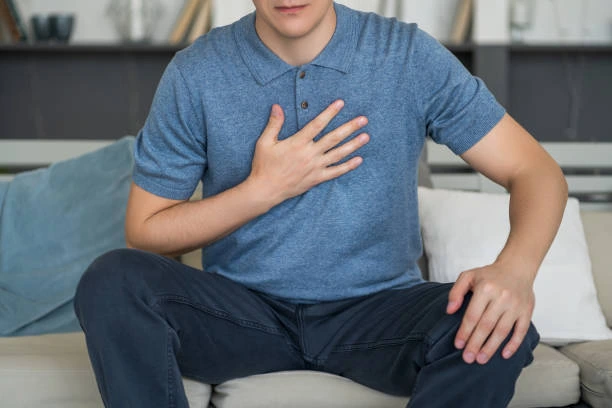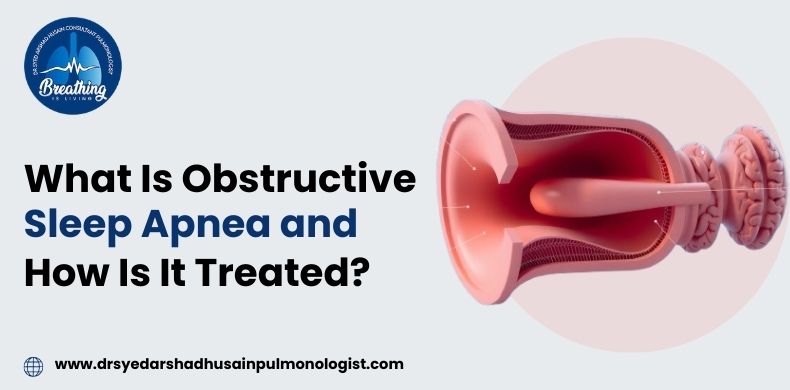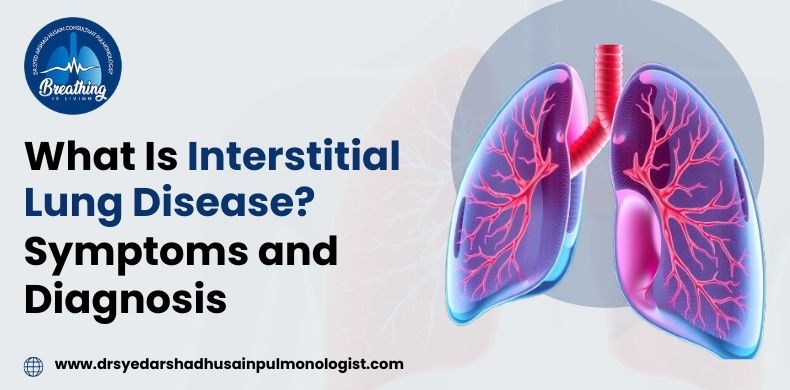
Shortness of breath, or dyspnea, is a condition when a person feels a suffocating struggle for oxygen; it is similar to if someone tries to breathe in and immediately needs to exhale. It hits with asthma, heart troubles, or anxiety, showing up as rapid breathing and chest tightness. Don’t avoid this disease—swift medical attention is key to pinpointing the cause and starting the right shortness of breath treatment for easier breathing.
Shortness of breath can occur through various ways, from a persistent feeling of breathlessness to common indicators like rapid breathing, chest tightness, and even a bluish tint to the skin. Let’s explore the diverse symptoms associated with this common respiratory concern.
Know More: Lung Cancer Screening
Respiratory Infections: The typical cold, flu, and pneumonia cause respiratory inflammation and congestion, making breathing difficult.
Chronic Obstructive Pulmonary Disease (COPD): This condition slowly harms the airways and makes breathing difficult as people tolerate this disease.
Asthma: Living with asthma means dealing with recurrent episodes of breathlessness, accompanied by the persistent companions of wheezing and chest tightness due to inflamed and narrowed airways.
Heart Conditions: Heart failure, heart attacks, and other heart-related issues throw a wrench in the heart’s pumping prowess, causing fluid buildup in the lungs and resulting in shortness of breath.
Anemia: The body obtains less oxygen as red blood cell count drops, causing fatigue and dyspnea.
Pulmonary Embolism: Blood clots in the lungs restrict oxygen exchange, causing acute dyspnea.
Obesity: Carrying excess weight strains lungs and the respiratory system, causing shortness of breath and lungs to expand less.
Smoking: Your lungs and social life suffer from smoking. Chronic bronchitis and emphysema, smoking’s accomplices, cause poor breathing.
Interstitial Lung Disease: When lung tissue carries the scars of various factors, it hampers regular lung function, resulting in breathing difficulties.
Lung Cancer: Lung tumors function as barriers, blocking airways and turning the simple act of breathing into a challenging task.
Diagnosing and treating shortness of breath requires identifying effective solutions to restore comfort and overall well-being. And here are some options for shortness of breath treatment:
Incorporate Regular Exercise: Engage in a consistent exercise routine to strengthen your heart and lungs, reducing the effort required for breathing.
Practice Relaxation Techniques: Learn and regularly practice relaxation techniques and breathing exercises recommended by your healthcare provider. These methods can alleviate shortness of breath associated with both underlying respiratory conditions and anxiety.
Explore Medication Options: Bronchodilators, a type of inhaled medication, work to ease tension in your airways and are typically prescribed for conditions like asthma and COPD. Additionally, medications targeting pain or anxiety can provide relief from breathlessness.
Consider Oxygen Therapy: If your blood oxygen levels are low, your healthcare provider might suggest oxygen therapy. This includes using extra oxygen delivered through a mask or nasal tube, and following the prescribed levels can greatly enhance your breathing.
Collaborate with Your Healthcare Provider: Establish open communication with your healthcare provider to ensure a tailored approach to shortness of breath treatment. Regular check-ins and adjustments to your treatment plan based on your progress and needs will contribute to effective management of breathlessness.

Sleep plays a key role in helping the body recover, think, and stay healthy. Yet restful sleep often feels out...
by ADMIN | September 1, 2025
Read More >
Breathing should come and feel easy. But people with interstitial lung disease (ILD) often have to fight for every breath...
by ADMIN | September 1, 2025
Read More >
Prof. Dr. Syed Arshad Husain is a senior Consultant Pulmonologist with over 35 years of experience in the field of respiratory and internal medicine, both in the National Health Services (NHS) UK and the Kings Hospital, in the UAE.